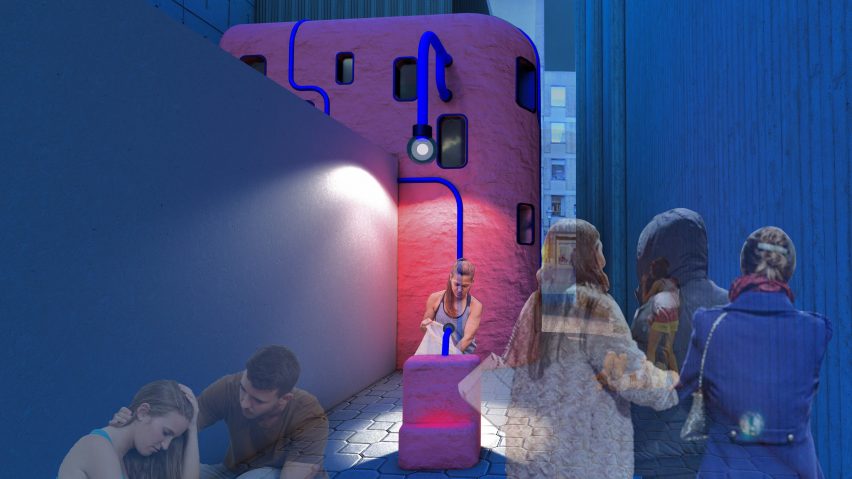
Oxford Brookes University presents 10 architecture projects
Dezeen School Shows: a "Synthetic House" created for a polyester fabric collector and recycling centre that's also designed as a community space are included in Dezeen's latest school show by students at Oxford Brookes University.
Also included is a late-night fast food restaurant that uses unsold perishables from neighbouring supermarkets and a multifunctional building serving as a car wash, public lido and private spa.
Oxford Brookes University
Institution: Oxford Brookes University
School: School of Architecture
Course: Architecture BA (Hons)
Tutor: Christina Godiksen
School statement:
"The School of Architecture is a vibrant community of staff and students located in the historical and culturally diverse city of Oxford. There is no house style at Oxford Brookes School of Architecture. Instead, you are encouraged to experiment and discover your own.
"Our undergraduate programmes include a RIBA part 1 BA (Hons) Architecture, ARB and LAM accredited course and a BA (Hons) Interior Architecture course. Both of our undergraduate courses have an affiliated association with the ACSA.
"Based in the historic city of Oxford, our BA courses will allow you to challenge, explore and develop not only you as an individual but also your portfolio. Our students are involved in many different live projects, from our OB1 live to designing an Innovation Hub at John Radcliffe hospital.
"Students explore both old and new challenges from around the world in their work. Here you can find our live projects that work with local communities, architecture that explore tectonic and human relations through film and making, our crucial work in emergency practices and resilience, as well as our expertise in sustainability.
"Everyone worked so hard this year, and we're so proud of what we've accomplished. The umbrella for all work is a sensibility towards place, people and planet. We hope you enjoy the show."
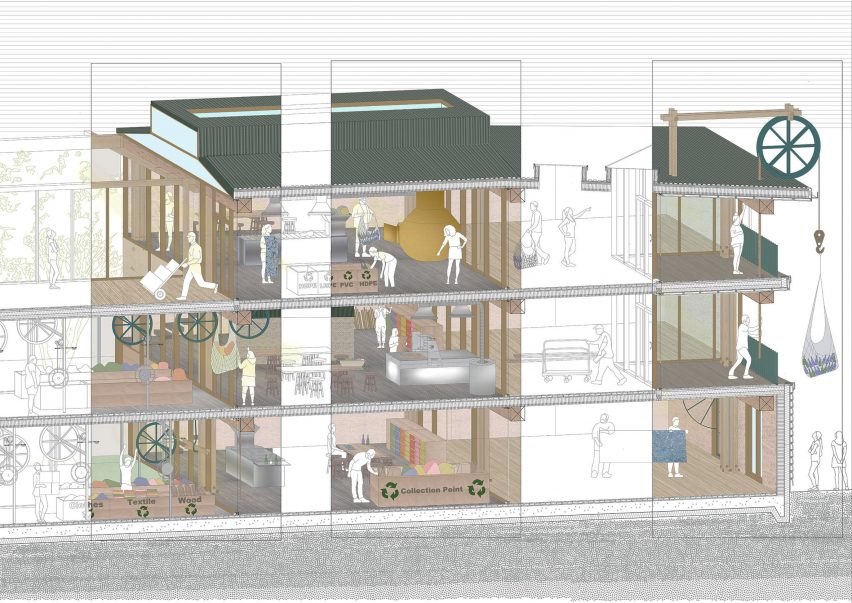
Union Street Recycling Centre by Hissah Almousa
"How can recycling centres become community spaces – places of generation rather than destruction?
"This project looked at how Plymouth City Council could bring a recycling centre into the city and collaborate with local businesses to use waste as a regenerative force growing an area incrementally.
"It explores high-quality circular construction methods in addition to the new social and economic benefits for the area and challenges the mindset of visitors not only to the area but also to the centre through the bed and breakfast rooftop pods."
Student: Hissah Almousa
Course: Architecture (BA Hons)
Tutors: Charlie Palmer and Ruth Cuenca
Email: hisahalmoosa1[at]gmail.com
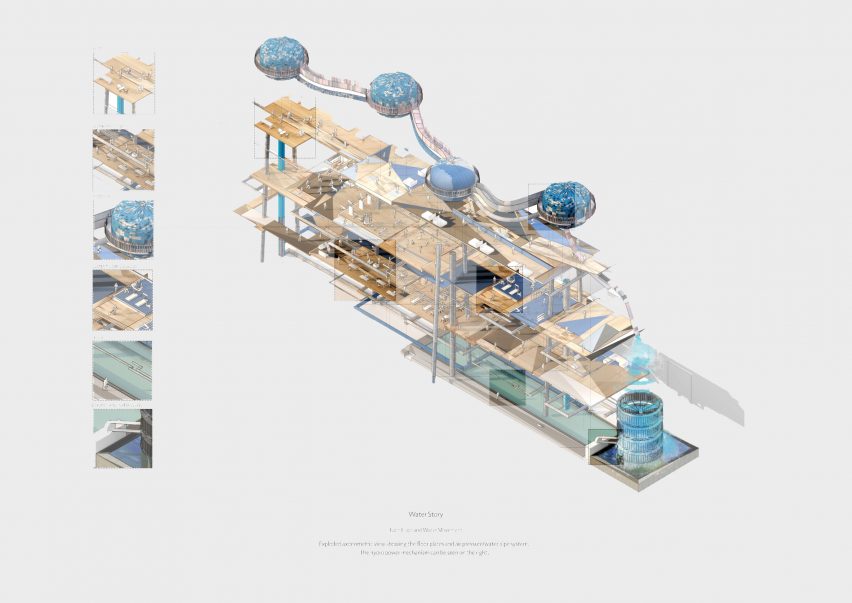
The Human Hydro Park Royal by Otto Copping
"This year Unit B has asked students to reimagine cities for a more compact, sustainable and human-centric vision of the future.
"Copping's scheme is a reaction to the current cost of living crisis created by rising energy prices and insecurity in the energy sector.
"It is a vision for how the otherwise wasted movement of users can be harnessed to create energy to run the building.
"The occupants of the building create air pressure that forces water to be released over a water wheel, in turn creating energy, taking the building off-grid."
Student: Otto Copping
Course: Architecture (BA Hons)
Tutors: Aditya Aachi, Diego Grisalena and Ting-Ting Ruotsalainen
Email: 19019895[at]brookes.ac.uk
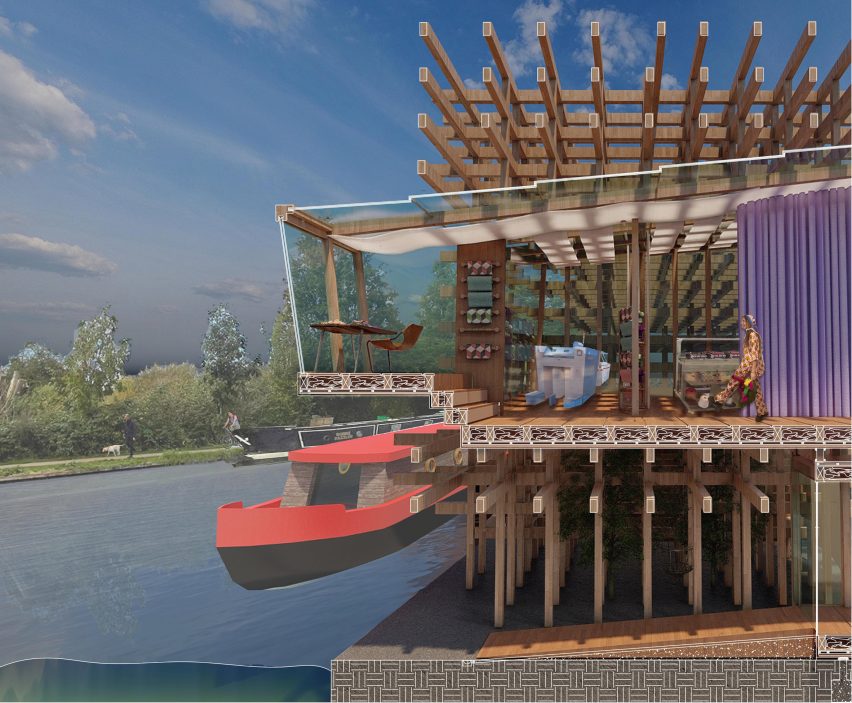
Synthetic House by Fiori Koustas
"Continuing Building Stories (Unit C)'s fascination with how stories open our eyes to possibilities not yet imagined, this year we imagined the future buildings of Oxford.
"Synthetic House by Fiori Koustas is a home and workspace for a polyester fabric collectologist who recycles polyester.
"In the entrance of the building, there is a polyester fabric clothing bank used by the public. A pulley system is used to pull the clothing up from the clothing bank onto the first floor of the recycling workspace.
"The home uses fabric as insulation in the walls, floors and ceilings."
Student: Fiori Koustas
Course: Architecture (BA Hons)
Tutors: Hannah Durham, Sam Chisholm and Marc Tuitt
Email: fiori.koustas[at]gmail.com
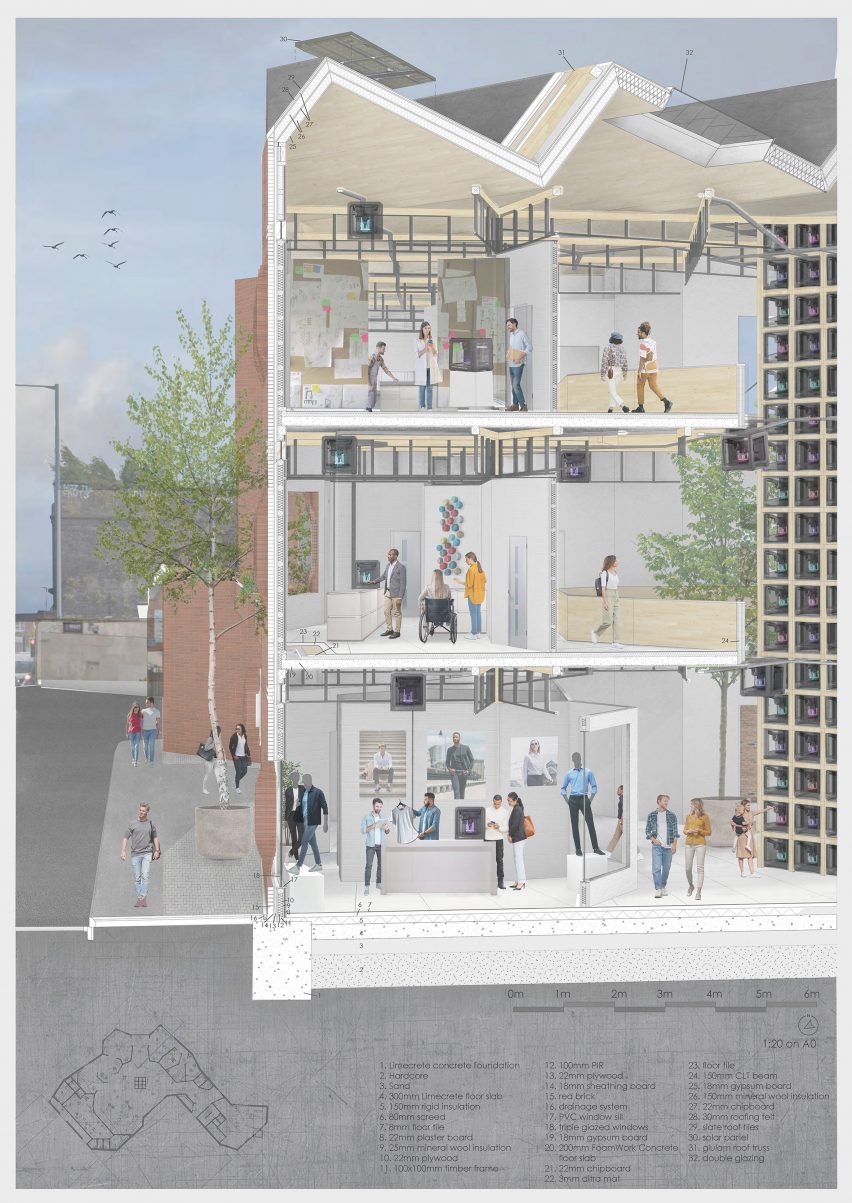
Fashiontech Factory by Amy Morrill
"The FashionTech Factory situated in the industrial hub of Digbeth explores an opportunity for emergence in an area facing drastic change for the future.
"The factory acts as an innovation centre and a pinnacle for sustainable and ethical manufacturing for the future of the digital fashion industry, rejuvenating the existing industrial identity of Digbeth for the community of creative professionals.
"The façade preserves the classic red brick architectural language of the area but utilises modern technology with robotic bricklaying.
"The structural system enables transparency and accessibility in the manufacturing process to inspire and engage visitors of the Factory."
Student: Amy Morrill
Course: Architecture (BA Hons)
Tutors: Melissa Kinnear, Peter Newton and Robert Goacher
Email: amygmorrill[at]gmail.com
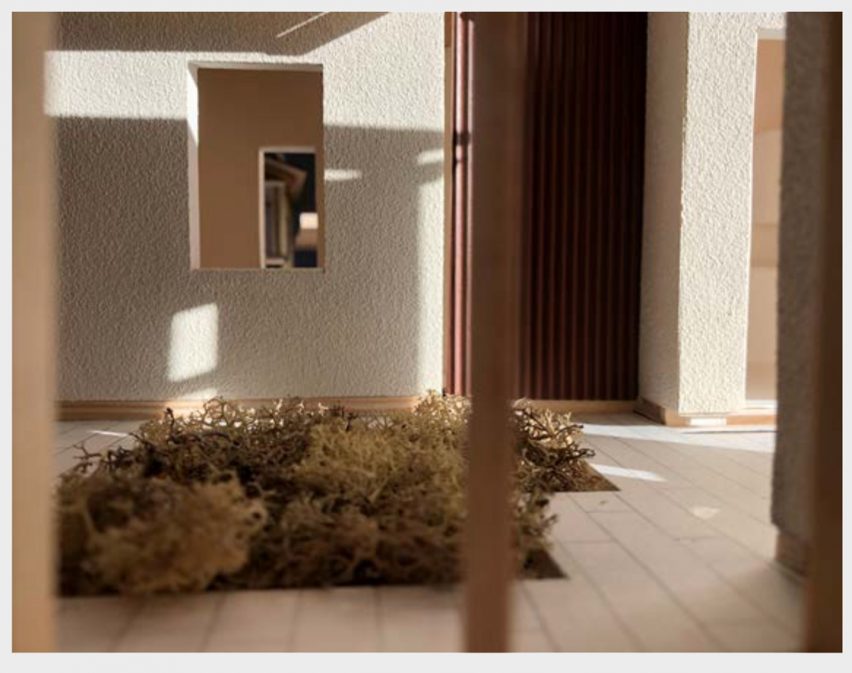
Shifting Landscapes by Nicole Llumigusin
"Shifting Landscapes explores the architecture of landscape and the material of place.
"With the ambition to generate unique building cultures, distinct local vernaculars and material tests drawn from site and brief, we explore the conversation of sustainability and architecture today, offering a hopeful perspective towards a carbon neutral discipline."
Student: Nicole Llumigusin
Course: Architecture (BA Hons)
Tutors: Nichola Barrington Leach and Caroline Esclapez
Email: 19017662[at]brookes.ac.uk
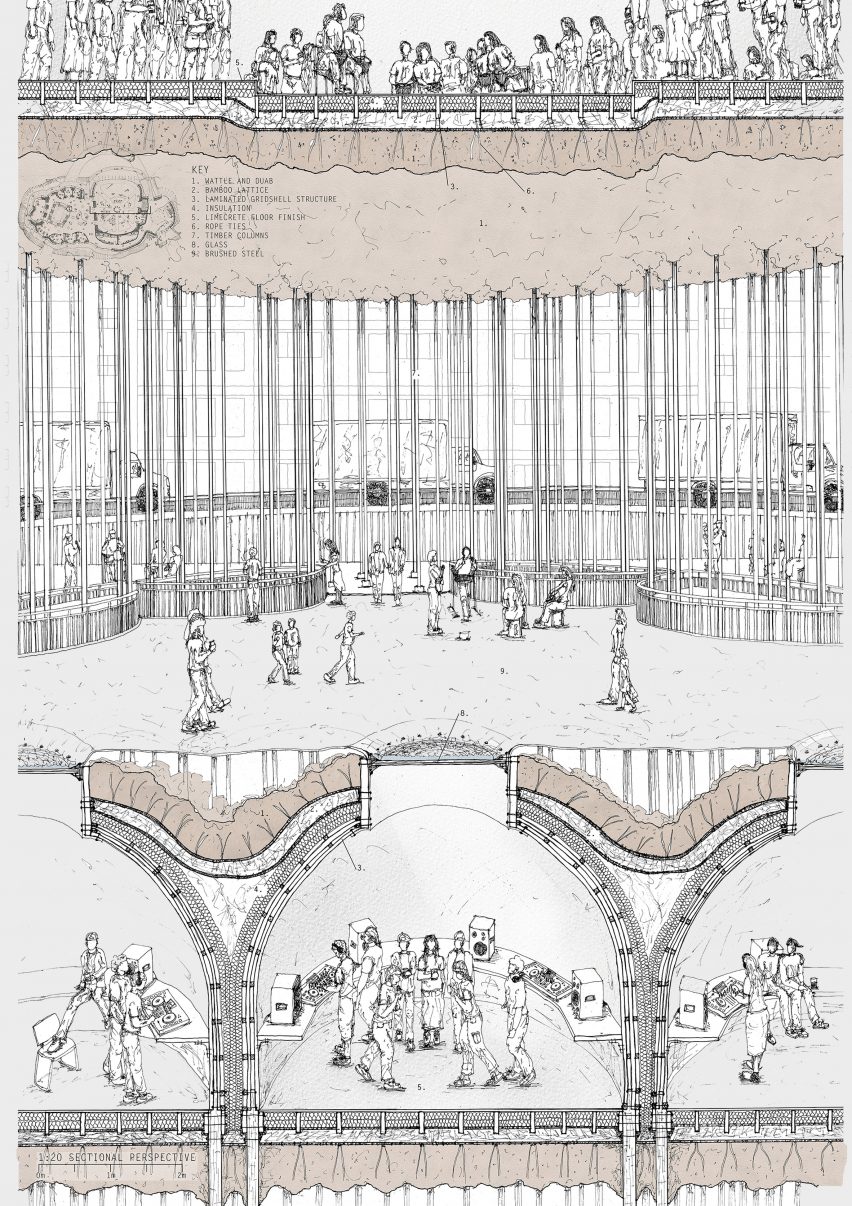
Moko Jumbi Drum School by Alice Hayes
"Challenging and condemning current Western ideologies, the project explores non-eurocentric methods of teaching, performance and non-written communication.
"The site and city, contaminated by the Transatlantic Slave Trade, is reimagined as a centre for Afro-Caribbean communities and the rhythms of Djembe talking drums, steel pans and sound systems, encouraging education of accurate historic events, cultural appropriation and origin; and re-energising the annual Saint Paul's Carnival.
"The building embodies the carnival's protective Moko Jumbie, creating a layered collaborative environment where people come together to drum, dance and chat, placing communal activities and spaces at the centre of the project and an outpost of black culture in the heart of the city."
Student: Alice Hayes
Course: Architecture (BA Hons)
Tutors: Toby Smith, Ayanna Blair-Ford and Justin Chapman
Email: alicehayesarch[at]gmail.com
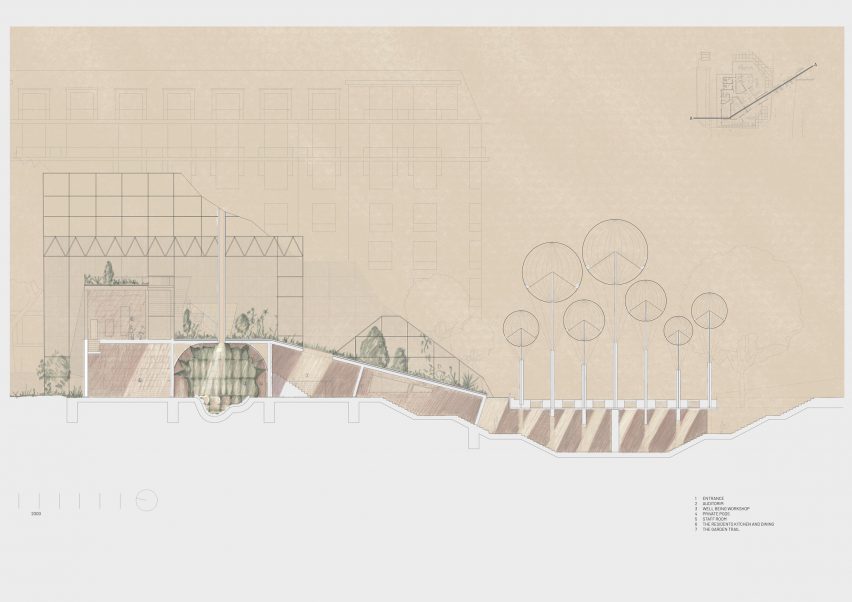
The Extinction Rebellion Centre by Maddie McGuinness
"The Extinction Rebellion Centre is a public garden, workshop and living quarters that aims to raise awareness of climate change.
"Designed within the decommissioned Marble Arch Mound, it provides an alternate purpose to a project that failed to function as a view-point for the city.
"The design integrates existing tactics that Extinction Rebellion deploys to create a permanent protest through architecture.
"The aim of this protest is non-violent, progressive and proportional to the carbon emission rates of Westminster. Holding a non-environmental government accountable, underground, under-the-road, reflecting an activist future envisioned by Lebbeus Woods for the Berlin Free Zone."
Student: Maddie McGuinness
Course: Architecture (BA Hons)
Tutors: Gareth Marriott and Felicity Barbur
Email: 19029770[at]brookes.ac.uk
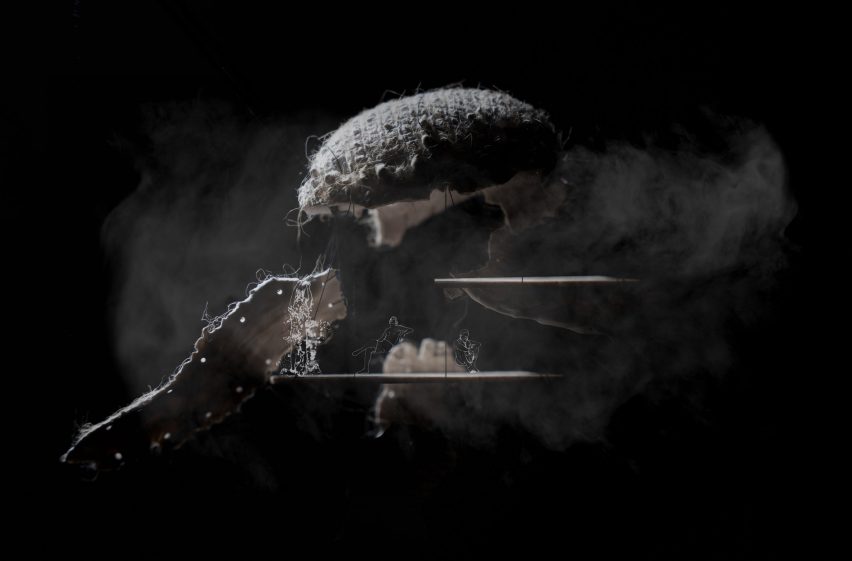
Car-Spa-Wash by Peter Topping
"The Car-Spa-Wash seeks to restore Southampton's historic connection to spa, bathing and wellbeing tourism.
"The building has three interlinked programmes: a car wash, a public lido and a private spa. The architecture presents an almost ritualistic progression of cleanliness and purity for both machine and flesh as both types of body traverse through an interwoven set of semi-subterranean spaces.
"The project challenges conventions of public and private space by establishing a complex and ever-changing dialogue between the atmospheric qualities created by each programme, creating user delight and a sense of visual and environmental connectedness."
Student: Peter Topping
Course: Architecture (BA Hons)
Tutors: Emma Kate Matthews and Kirsty Mcmullan
Email: peterjctopping[at]gmail.com
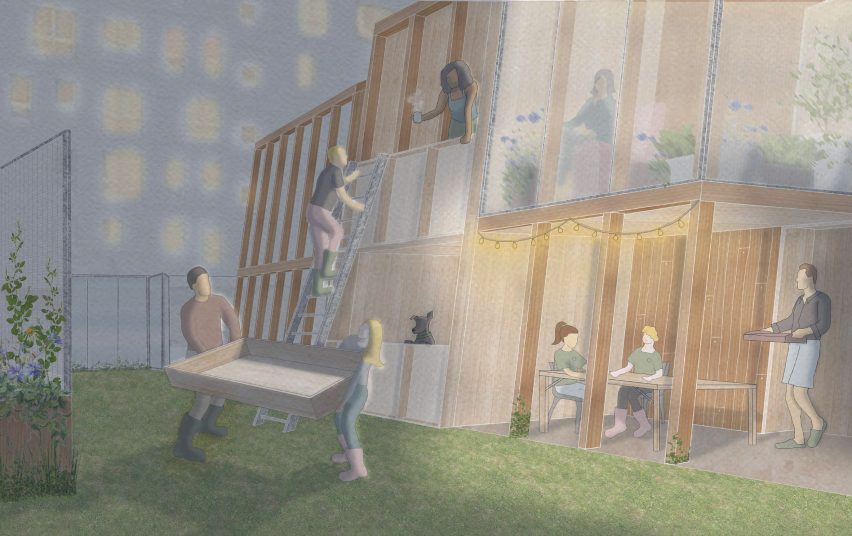
All aboard - Housing for displaced canal families by Hannah Snow
"Changing legislation is displacing long established boating families along Hackney's historic canals.
"The project explores rehousing these communities and challenges the seemingly unstoppable phenomenon of large for-profit developments across these once industrious mixed-use environments – to which the canal owes its existence.
"The project draws from the inventive and self reliant nature required for canal boat living, as well as its inherent complexities such as low energy use, minimal living and the requirement for constant adaption and reimagining of small spaces as needs of families change.
"The project acts as a prototype, using the once prolific canal side timber yards as catalysts for self building collective housing; at the same time it seeks to address the monocultural nature of residential only environments and provide an identity, formed on craft, collaboration and production."
Student: Hannah Snow
Course: Architecture (BA Hons)
Tutor: Mark Rist and Natalie Savva
Email: hannahesnow1[at]gmail.com
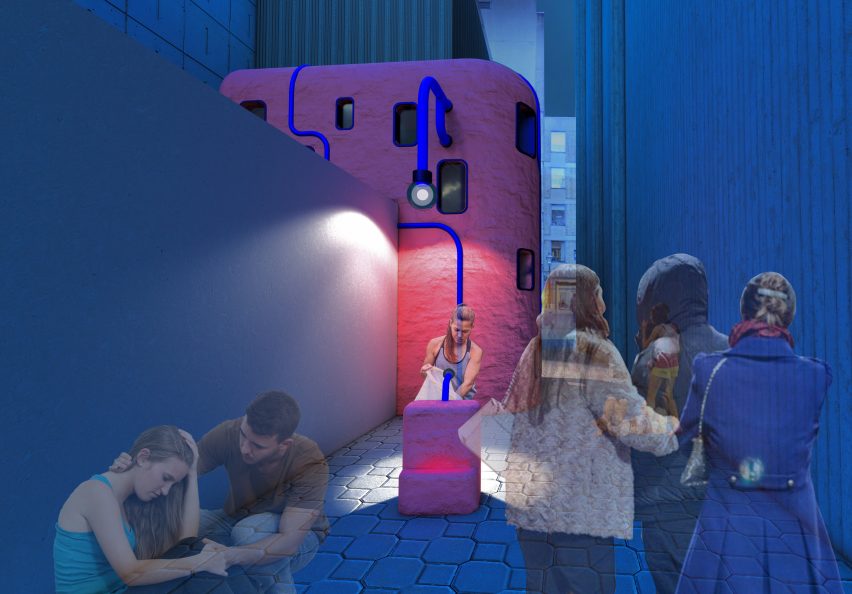
Trash Feast by Vignesh Sankar
"Trash Feast is a compact fast food restaurant serving healthy burritos to drunk and hungry night-time clients down an alley in Oxford's City centre.
"Food prepared by the restaurant is made using unsold perishables from neighbouring supermarkets.
"The building continues the provocation of Gaetano Pesce's use of pink polyurethane foam as a whole-solution cladding in a bid to challenge veneered and 'finished' aesthetics in contemporary building methods.
"Its overall form is inspired by the adobe mud huts of Mexico and a friendly 'pet' bin with its own light-up antennae addresses littering and lighting issues."
Student: Vignesh Sankar
Course: Architecture (BA Hons)
Tutors: Jack Hardy and Laurence Lumley
Email: viggyarts[at]gmail.com
Partnership content
This school show is a partnership between Dezeen and Oxford Brookes University. Find out more about Dezeen partnership content here.